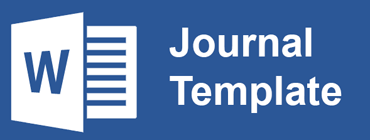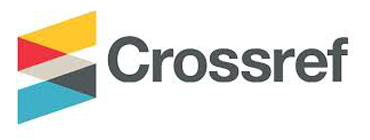THE IMPROVING STUDENTS’ WRITING SKILLS IN DESCRIPTIVE TEXT BY USING VISUAL-SPATIAL INTELLIGENCE STRATEGY AT MTS AL-JUMHURIYAH SEI ROTAN
Abstract
This research was aimed to find out the improving students’ writing skills in descriptive text by using Visual Spatial Intelligence. in enhancing this research, the researcher applied the classroom action research, which was done through four steps. They were plan, action, observation, and reflection n. The subjects of this study were 19 students at eight grade students of MTS Al Jumhuriyah Sei Rotan in 2019/2020 Academic Year. The technique of analyzing the data of this research was applied by quantitative and qualitative data. The qualitative data were taken from observation sheet, interview, and documentation. The quantitative data were taken from students writing skill test. The data was taken from test result which was done in two cycles and two cycles conducted in four meetings. The test was given to the students in form of pre-test, post test in the first cycle and the post test in the second cycle. The result of the analyzing the data showed that the students’ mean score was an improving on the students writing skills from each cycles. It was showed from Pre-test, there was 6 students got successful score criteria or it was (32%) and 13 students’ got unsuccessful score criteria. In the Post test in cycle I, there was 10 students (47%) who got successful score criteria. In the post test in cycle II there was 16 students (84%) who got successful score criteria. In Other words, the students’ writing skills in descriptive text was improved. Based on the observation sheet, interview, and documentation, it can be showed that the expression and enthusiasm of students in learning were also improve.
Full Text:
PDFReferences
Abbas Saleh. (2006). Pembelajaran Bahasa Indonesia yang Efejtif di Sekolah Dasar. Jakarta:Dirjen Dikti Depdiknas.p.125 e.
Armstrong, T. (2004). Sekolah Para Juara–MenerapMenerapkan Multiple Intelligence Dalam Dunia Pendidikan.Terjemahanoleh Yudhi Murtanto,Bandung: Kaifa.
Asep. J., Abdul H. (2013). Evaluasi Pembelajaran.Yogyakarta: Multi Pressindo
Betty Mattix Dietsch. (2005). Reasoning and Writing Well: A Rhetoric, Research Guide, Reader, And Handbook, Ohio: Graw Hill Marion Technical College.
Cambridge Advance Dictionary. (2003). Cambridge Advance Learner’s
Dictionary (First Edition). Cambridge: Cambridge University Press.
Connell, J. (2005). Brain-based strategies to reach every learner. New York: Scholastic.
Clive Opie. (2004), Doing Educational Research, USA: Sage Publication. Delgoshaei, Y., & Delavari, N. (2012). Applying multiple-intelligence approach to education and analyzing its impact on cognitive development of pre- school children. Procedia-Social and Behavioral Sciences, 32, 361-366.
Fliess, S. (2006). What it means to be a visual learner. Education.com.
Folse, K. S., Vokoun, A. M., & Solomon, E.V. (2009).Great Writing 2: Great
Paragraphs (Third Edition). Boston: Heinle Cengage Learning.
Gardner, H. (1983). Frames of mind: the theory of multiple intelligences, New York: Basic Books, Inc.
Gardner, H. (1999). Intelligence reframed: Multiple intelligence for the 21st century. NewYork: Basic Books, Inc.
Gardner, H. (2006). Changing Minds. The art and science of changing our own and other people’s minds. Boston MA: Harvard Business School Press.
Golon, A. (2004). Raising topsy-turvy kids: Successfully parenting your visual- spatial child, Denver: DeLeon Publishing.
Golon, A. (2008). Visual-spatial learners: Differentiation strategies for creating a successful classroom, Waco: Prufrock Press Inc.
Harmer, J. (2004). How to Teach Writing. England:Pearson Education Ltd.
Heaton, John Brian. (1990). Writing English Language Tests (New Edition). Hongkong:Longman UK Limited.
Hindal, H, Reid, n., & Badgaish, M. (2009). Working memory, performance and learner characteristics, (Research in Science & Technological Education, 27, 187-204), p. 190
Hyland. (2004). Genre and Second Language Writing. Ann Arbor, MI:The
University of Michigan Press.
JB.Heaton. (1988), Writing English Language Test, Consultant Editors: New York.
Juzwiak, C. (2012). Stepping Stones (a Guided Approach to Writing Sentences and Paragraphs). New York: Bedford/St. Martin’s
John Langan. (2011), College Writing Skills,United States of America: McGrawHill.
Kelly, K. (2017). Visual-Spatial Processing: What You Need to Know. Spanyol.
Madya, S., (2007). Teori dan Praktik Penelitian Tindakan. Bandung:Alfabeta. Marilyn Lichtman. (2010). Qualitative Research in Education: A User's Guide, USA: Sage Publications.
Mas’ud, Z., Tohirin, Risnawati. (2008). Modul Diklat Penelitian Tindakan Kelas dan Penulisan Karya Ilmiah, Panitia Sertifikasi Guru Rayon 8. AIN Imam Bonjol Padang, UIN Suska.
Ormrod, J. E. (2006). Learners may be more intelligent in some domains than others.
Oshima, Aliceand Ann Hogue, (1997).Writing Academic English. New York: Addison Wesley Publishing Company.
Rochiati Wiriatmadja, (2006), Metode Penelitian Tindakan Kelas (Untuk
Meningkatkan Kinerja Guru dan Dosen), Bandung: Remaja Rosdakarya.
Sawyer, R. K. (Ed.) (2006). The cambridge handbook of learning sciences.Cambridge: Cambridge University Press.
Shihab Quraish, (1992), Membumikan Al-Qur‟an Fungsi dan Peran Wahyu
dalam Kehidupan Masyarakat, Bandung : Mizan.
Silverman, L. (2002). Upside-down brilliance: The visual-spatial learner. Denver: DeLeon Publishing.
Sousa, D. (2006). How the brain learns: third edition. Thousand Oaks: Corwin Press.
Sugiyono, (2007),Statistika untuk Penelitian. Bandung: Alfabeta.
Suryani dan Hendrayadi, (2015),Metode Riset Kuantitatif. Jakarta: Prenadamedia grup.
Smith, M. K. (2002, 2008). Howard Gardner and multiple intelligences.The encyclopedia of informal education.
Taquiddin M, Al-Hilali and M. Mukhsin Khan. (1996), The Noble Qur’an, (Madinah Maktaba Darussalam).
Thomas S. Kane. (2000), Essential Guide to Writing, New York: Oxford University Press.Utami Dewi. (2013), How to write, Medan: La Tansa Press.
Wibowo, F. C., & Suhandi, A. (2013). Penerapan Model Science Creative Learning (SCL) Fisika Berbasis Proyek Untuk Meningkatkan Hasil Belajar Kognitif dan Keterampilan Berpikir Kreatif. Jurnal Pendidikan IPA Indonesia, 2(1), 67-75.
Zhemack, D. E., & Rumisek, L. A. (2003). College Writing From Paragraph to Essay. New York: Macmillan.
Zemach, D. E., & Islam, C. (2006). Writing in Paragraphs. New York: Macmillan
Refbacks
- There are currently no refbacks.

This work is licensed under a Creative Commons Attribution-NonCommercial-ShareAlike 4.0 International License.
INDEXING
Bright Vision by UIN Sumatera Utara Medan is licensed under a Creative Commons Attribution-NonCommercial-ShareAlike 4.0 International License.
Based on a work at http://jurnaltarbiyah.uinsu.ac.id/index.php/brightvision.









